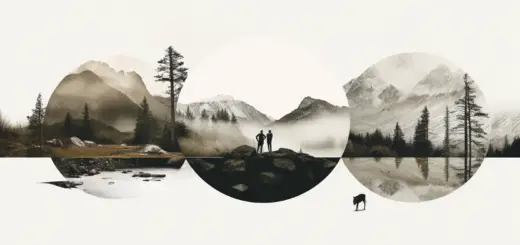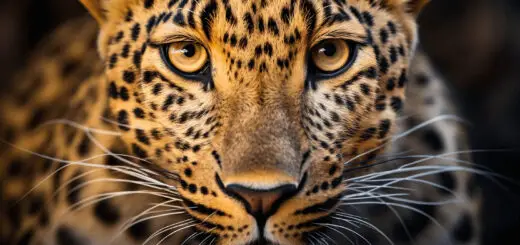The Art of Landscape Photography: Techniques for Capturing Majestic Sceneries
Landscape photography is a captivating art form that allows photographers to capture the beauty and grandeur of the natural world. It is an immersive experience that takes you on a journey to stunning locations, where you can witness breathtaking landscapes unfold before your eyes. From towering mountains and serene lakes to vast deserts and picturesque coastlines, landscape photography offers endless possibilities for creative exploration.
In this article, we will explore the art of landscape photography and delve into some of the top techniques that photographers can use to capture majestic sceneries. Whether you are a professional photographer or an amateur enthusiast, these techniques will help you elevate your landscape photography game and create images that transport viewers to awe-inspiring locations.
So, grab your camera gear, put on your hiking boots, and let’s embark on a photographic journey where beauty knows no bounds. From composition tips to playing with light and mastering unique styles, we will cover it all. Get ready to capture nature’s splendor through the lens of your camera. Let’s dive in!
Top Photography Trends in 2023
The world of photography is constantly evolving, with new trends and techniques emerging each year. As we look ahead to 2023, several exciting photography trends are set to take center stage. From the integration of artificial intelligence (AI) to the resurgence of Zine Culture, photographers are embracing innovative approaches to capture captivating images. Let’s explore some of the top photography trends that you can expect to see in 2023.
AI-Enhanced Photography
With advancements in technology, AI continues to revolutionize the photography industry. AI-powered cameras and editing tools are becoming increasingly popular, enabling photographers to enhance their images with ease. From automated post-processing to intelligent scene recognition, AI enhances the overall quality and creativity of photographs. With AI at their fingertips, photographers can focus more on composition and storytelling, knowing that the technical aspects are being taken care of.
Sustainable Practices
In an era where sustainability is a global concern, photographers are embracing eco-conscious practices to minimize their environmental impact. From using rechargeable batteries to reducing plastic waste, photographers are finding creative ways to align their passion for photography with sustainable choices. This trend extends to the preservation of natural landscapes, with photographers promoting conservation efforts through their work. By showcasing the beauty of our planet, photographers aim to inspire others to protect and cherish our environment.
VR and AR Photography
Virtual Reality (VR) and Augmented Reality (AR) are expanding the possibilities of photography. Through immersive experiences, photographers can transport their viewers to different worlds and tell stories in unique and interactive ways. With VR headsets and AR-enabled devices becoming more accessible, photographers have a new canvas to experiment with and push the boundaries of traditional photography. This trend opens up exciting opportunities for creative expression and engagement with viewers.
Drone Photography
The use of drones to capture stunning aerial photography and video is a trend that shows no signs of slowing down. Drones provide photographers with a fresh perspective, allowing them to capture breathtaking images from unique angles and heights. Whether it’s capturing majestic landscapes or documenting events from above, drone photography adds a whole new dimension to the art form. As technology improves and regulations become more accommodating, we can expect to see even more impressive aerial imagery in 2023.
Personalized Photography
In an era of mass production and digital overload, personalized photography is gaining popularity. Photographers are finding ways to connect with their clients on a deeper level by offering tailored sessions that reflect their unique personalities and interests. From themed photoshoots to customized editing styles, photographers are creating one-of-a-kind experiences for their clients. This trend emphasizes the importance of individuality and personal expression in photography.
Fusion of Neon Lights in Street Photography Scenes
The fusion of neon lights in street photography scenes is set to add depth and vibrancy to images in 2023. By incorporating vibrant neon colors into urban landscapes, photographers can create captivating compositions that catch the eye. From neon-lit streets to glowing signs, this trend brings a modern and dynamic energy to street photography. As photographers explore this trend, expect to see stunning images that capture the essence of urban life.
The Comeback of Zine Culture
Zine Culture, a trend from the pre-digital era, is making a comeback in 2023. Zines, short for “magazines,” are self-published and often DIY-style publications that showcase the work of photographers and artists. This trend celebrates the tactile nature of print and fosters a sense of community among photographers. With its raw and authentic appeal, Zine Culture offers a refreshing alternative to the digital world, allowing photographers to showcase their work in a tangible and intimate format.
Aerial Photography with Drones
Aerial photography has become more accessible than ever with the emergence of drones. In 2023, we can expect drone aerial photography to continue its rise in popularity. Drones allow photographers to capture stunning images from elevated perspectives, providing a fresh and unique viewpoint. From sweeping landscapes to architectural marvels, aerial photography offers a whole new realm of creative possibilities.
As we approach 2023, these photography trends offer exciting opportunities for photographers to explore new techniques, push creative boundaries, and captivate their audiences. Whether it’s harnessing the power of AI, embracing sustainable practices, or experimenting with alternative formats like Zine Culture, photographers can look forward to an inspiring year ahead. Stay tuned for these trends and more as the world of photography continues to evolve.
Techniques for Capturing Majestic Sceneries
Capturing majestic sceneries through photography is a true art form that requires a keen eye, technical skill, and a touch of creativity. Whether you’re a beginner or a seasoned photographer, there are several techniques you can employ to bring out the magic in landscapes. Exploring new viewpoints and perspectives, trying different techniques, embracing reflections and playing with light, utilizing unique locations, and experimenting with styles and trends can all elevate your landscape photography. Let’s dive into each of these techniques and discover how they can help you capture truly breathtaking images.
Exploring New Viewpoints and Perspectives
One way to truly capture the essence of a majestic landscape is to explore new viewpoints and perspectives. By getting down low and finding unique angles, you can bring a fresh perspective to familiar scenes. This technique allows you to reveal hidden details and create a sense of depth in your photos. An interesting viewpoint can make an ordinary landscape extraordinary, so don’t be afraid to get creative and experiment with different vantages.
Trying Different Techniques
Photography is all about experimenting and pushing your boundaries. Trying different techniques in landscape photography can lead to more satisfying results. From long exposures to HDR (High Dynamic Range) photography, each technique offers a unique way to capture the beauty of nature. Don’t be afraid to step out of your comfort zone and explore new techniques – you may be surprised by the stunning results you can achieve.
Embracing Reflections and Playing with Light
Reflections can add a touch of magic to landscape photography. Whether it’s the reflection of a mountain in a lake or the play of light on a rainy day, incorporating reflections can create a sense of tranquility and beauty in your images. Additionally, playing with light – whether it’s golden hour or using creative lighting techniques – can add depth and drama to your landscape photos. Harnessing the power of light and reflections can truly transform an ordinary scene into a breathtaking masterpiece.
Utilizing Unique Locations
While popular landmarks and iconic destinations may offer stunning scenery, don’t overlook the beauty that can be found in lesser-known locations. Exploring unique and off-the-beaten-path places can provide fresh and captivating scenes that haven’t been photographed as frequently. These hidden gems can offer a new perspective and unique compositions that will set your landscape photos apart.
Experimenting with Styles and Trends
Like any form of art, photography has trends and evolving styles. Experimenting with different styles and embracing new trends can help photographers enhance their landscape photography skills. Whether you prefer a minimalist approach, dramatic edits, or vibrant compositions, following or creating new trends can push your creative boundaries and add a fresh and contemporary touch to your images.
By utilizing these techniques – exploring new viewpoints, trying different techniques, embracing reflections and light, utilizing unique locations, and experimenting with styles and trends – you can capture majestic sceneries in a truly captivating way. So grab your camera, venture into the great outdoors, and let your creativity soar as you embark on a journey to capture the breathtaking beauty that surrounds us.
Conclusion
In conclusion, capturing majestic sceneries requires a combination of technical expertise, creativity, and a keen eye for detail. By exploring new viewpoints and perspectives, trying different techniques, embracing reflections and playing with light, utilizing unique locations, and experimenting with styles and trends, photographers can truly bring out the beauty of nature in their landscape photographs. With the ever-changing photography trends and advancements in technology, it’s essential for photographers to stay updated and incorporate these innovations into their work.
For more inspiration, camera reviews, and helpful articles on photography techniques, check out Wimarys.com. Run by Wim Arys, a talented portrait and landscape photographer, this website offers a wide range of resources for photographers of all levels. Whether you’re looking for tips and tricks or in-depth tutorials, Wimarys.com is a valuable destination for all your photography needs. Visit the website and embark on an exciting journey to capture stunning landscapes with your camera.
Frequently Asked Questions
- What are some essential techniques for landscape photography?
Some essential techniques for landscape photography include: 1. Finding the right composition, 2. Utilizing the rule of thirds, 3. Paying attention to lighting and weather conditions, 4. Using a tripod for stability, and 5. Experimenting with different perspectives.
- What camera equipment is recommended for landscape photography?
For landscape photography, it is recommended to use a DSLR or mirrorless camera with a wide-angle lens. Additionally, carrying a tripod, filters, and a remote shutter release can also enhance the quality of your landscape shots.
- How can I capture sharp and detailed landscape photos?
To capture sharp and detailed landscape photos, follow these tips: 1. Use a small aperture (higher f/stop number) to increase depth of field, 2. Use a tripod to avoid camera shake, 3. Use manual focus or focus stacking to ensure the entire scene is sharp, and 4. Shoot in RAW format to capture more detail and have better editing flexibility.
- What is the best time of day for landscape photography?
The best time for landscape photography is during the golden hours, which are the hours just after sunrise and before sunset. The soft, warm light during this time creates a magical effect on the landscapes, enhancing their beauty.
- How can I post-process my landscape photos to make them more appealing?
To post-process your landscape photos, you can use photo editing software like Adobe Lightroom or Photoshop. Adjusting the exposure, enhancing colors, and applying selective adjustments can help bring out the details and create a visually appealing result.



